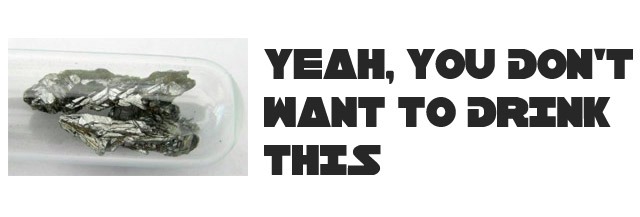In recent years, arsenic has been at the center of a debate over safe levels of water contaminants.
Your first reaction to this debate might be “why is there any amount, however small, of contaminants in my drinking water?”, which is a completely reasonable conclusion to draw. Regulating bodies have determined, however, that there are in fact so-called safe levels of otherwise harmful substances. Arsenic is one of these.
Health effects of arsenic in drinking water
Firstly, arsenic is a carcinogen. Studies have shown that it causes bladder, skin and lung cancer. It’s likely that it also causes liver and kidney cancer. What’s more, there is evidence that arsenic can cause reproductive complications and birth defects. It also causes damage to the skin, central nervous system, heart and blood vessels.
How much arsenic is in your drinking water?
The current national standard for arsenic is 10 parts per billion. In other words, your tap water should have a concentration of arsenic that is no more than 10 parts per billion. Many would argue that even that amount is unsafe. What is truly troubling, though, is that in many states the number may be much higher than that.
According to the National Resources Defense Council, as many as 34 million Americans may be drinking water that is contaminated with enough arsenic to pose a cancer risk (from a 2000 report). That information comes from the states that reported their arsenic levels to the EPA. Half the states did not report this information and it is likely that they have arsenic levels that are much higher.
How do you find out how much arsenic is in your drinking water?
There are a few ways in which you can find out how much arsenic is your drinking water. One way is to take a look at the NRDC chart on arsenic, which can be found here. If your state is not listed on the chart, you can call your water utility directly. They are actually required by law to offer you a report on all water toxins and contaminants found in your water if you request it. Finally, you can analyze your drinking water yourself if you are so inclined. We wrote an article about how to do that here.
The bottom line
The bottom line is that there is likely some amount of arsenic in your water. You can research the level of arsenic or keep your fingers crossed that the quantity is “safe” for drinking. Or you can get a quality water filter and not have to worry at all.
There are many reasons for purifying your water. The prospect of arsenic in your tap water is one more. Why bother interpreting studies and charts? Why bother trying to draw the line at where a carcinogen becomes consequential? Make a small investment and ensure that your water is safe for drinking. The alternative is simply not worth it.
If you have any thoughts on arsenic in drinking water, please share them in the comments below. Also, feel free to check out some of our other articles on water contaminants.







{ 0 comments… add one }